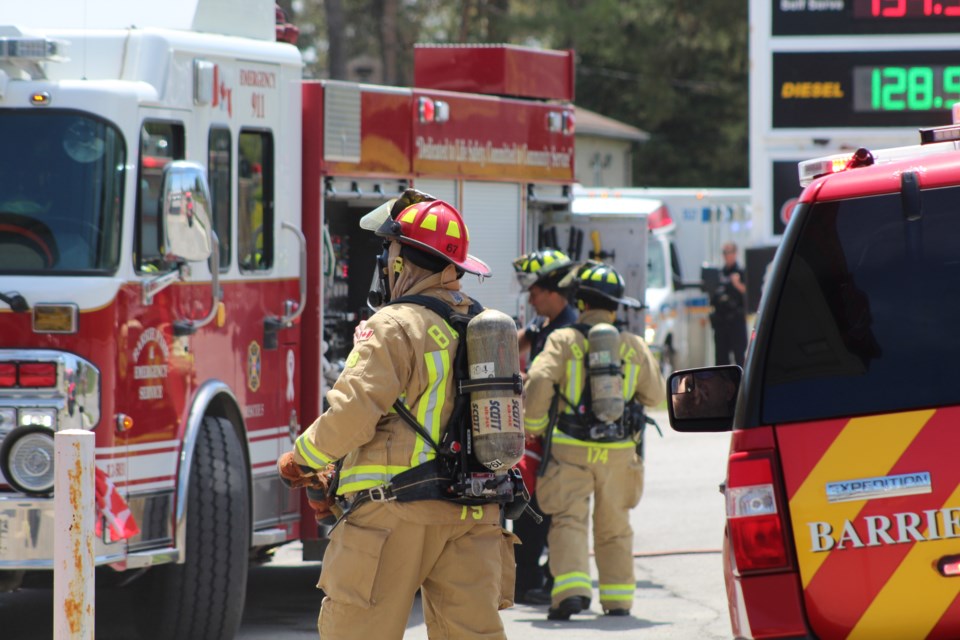It’s become firefighting by the numbers in Barrie.
At a recent presentation to city councillors, Fire Chief Cory Mainprize explained how the Barrie Fire and Emergency Service (BFES) uses data to make many of its critical decisions.
“In recent years, BFES has shifted to using data analytics to support our operational decisions, budget requests, future planning and the identification of community risk, station locations, human resourcing, procurement, operational performance and our public education program,” he said.
To make the transition to a data-driven organization, Barrie Fire had to introduce three concepts into its business model.
“The first one was if it’s important, we’ve got to measure it,” Mainprize said. “If you can’t prove it, it didn’t happen, and information and data will trump opinion virtually every single time.”
This means developing key performance indicators (KPIs) for everything important, the chief said, and setting up systems to capture this data for future analysis.
“We’ve set up our systems to capture just about everything we do that’s important," Mainprize explained, “everything from volume of calls, what days they come in, what time of day, how long it took us to get there, how long it took us to get out the door, all of those things so we can tailor our policies, procedures and training to provide optimum service.”
In 2021, the Barrie Fire’s average response time was six minutes and nine seconds from receiving the information to arriving at the scene.
Also in 2021, 90 per cent of the time, Barrie Fire had a response time of less than nine minutes and 15 seconds from receiving the information to arriving on the scene.
Few Barrie Fire details are too small to be a KPI.
Its communications branch dispatches services to Barrie and 28 other municipalities, at a total of 62 fire stations, serving almost one million people. Mainprize said the communications branch answered the phone in less than eight seconds, 99 per cent of the time.
The Barrie fire chief also said that approximately 75 per cent of Barrie Fire calls are medical, while 2.1 per cent of calls are actual fires.
Mayor Alex Nuttall asked about a hybrid system for fire protection and medical services, then about the cost of the current system — where firefighters respond to medical calls.
“Has there ever been any conversation with regards to charge-backs to the County (of Simcoe) for the quasi-paramedic services that are being provided by the fire department in the city of Barrie?” he asked.
“That discussion has never occurred, no,” Mainprize said.
The County of Simcoe provides paramedic/land ambulance service to Barrie, which has budgeted to pay the county $7.2 million this year for these services.
“Has there been any accounting of the costs associated with 75 per cent of the calls?” Nuttall asked.
“We have done some accounting of the costs from the work that we did — it was a very small number,” Mainprize said. “Our staff are on duty. We consider the medicals — that’s a value added service.
“So aside from the additional fuel and some of the medical supplies, the cost was actually quite low, given the number of responses that we respond to,” the fire chief added.
“And I think one of the key points with the medical calls, when we do an additional kind of review, the number of responses that we go to and the number of direct lives that we actually save responding to medical calls, exceeds every other call type put together," Mainprize said.
Barrie Fire has 187 full-time staff and five part-timers in five branches — administration, operations, fire prevention and public education, communications, professionalisms standards and emergency management
Last year, the local fire department conducted 17 significant fire investigations.
Also in 2022, Barrie Fire did 10,000 door-to-door educational visits and recorded the status of alarm systems.
“Barrie has about 44,000 individual residential homes, so it takes four years to get them all done, then we start again,” Mainprize said. “We record information, then cross-reference the data with every fire that occurs in Barrie to determine the status of the alarm system when we visit the home. Was it working, not working?
“We’ve actually had some tremendous success stories from this,” he added. “We’ve been able to visit homes, determine (smoke alarms) weren’t working, then gone and replaced them. In one instance, we had a fire that occurred approximately two months later, when the individual was woken during the night in the home and surely would have succumbed to their injuries if we hadn’t initiated this program. It’s been a tremendous success.”
But Mainprize said there has not been a significant change in the percentage of Barrie homes with working smoke alarms, that 60 to 70 per cent don’t have enough, or they are poorly located or too old.
Barrie has five fire stations — Station No. 1 at 155 Dunlop St. W. has a pumper, a rescue and an aerial truck; Station No. 2 at 15 Bell Farm Rd. has a rescue truck; Station No. 3 at 340 Big Bay Point Rd. has an aerial truck; Station No. 4 at 250 Ardagh Rd. has a pumper truck; and Station No. 5 at 360 King St. has a rescue truck.
This year’s city capital budget contains $5.6 million for the new Barrie Fire and Emergency Service Station No. 6. It will go at the southwest corner of Prince William Way and Mapleview Drive, and is to be operational in early 2025.
This year’s city operating budget also includes pre-approval for 20 new Barrie firefighters so the recruitment process for these positions can begin in preparation for the 2025 opening of Fire Station No. 6.
Barrie Fire has a 2023 base budget of $30 million in expenditures, with 96 per cent for salaries and benefits. Its capital budget is $3 million to $5 million.



